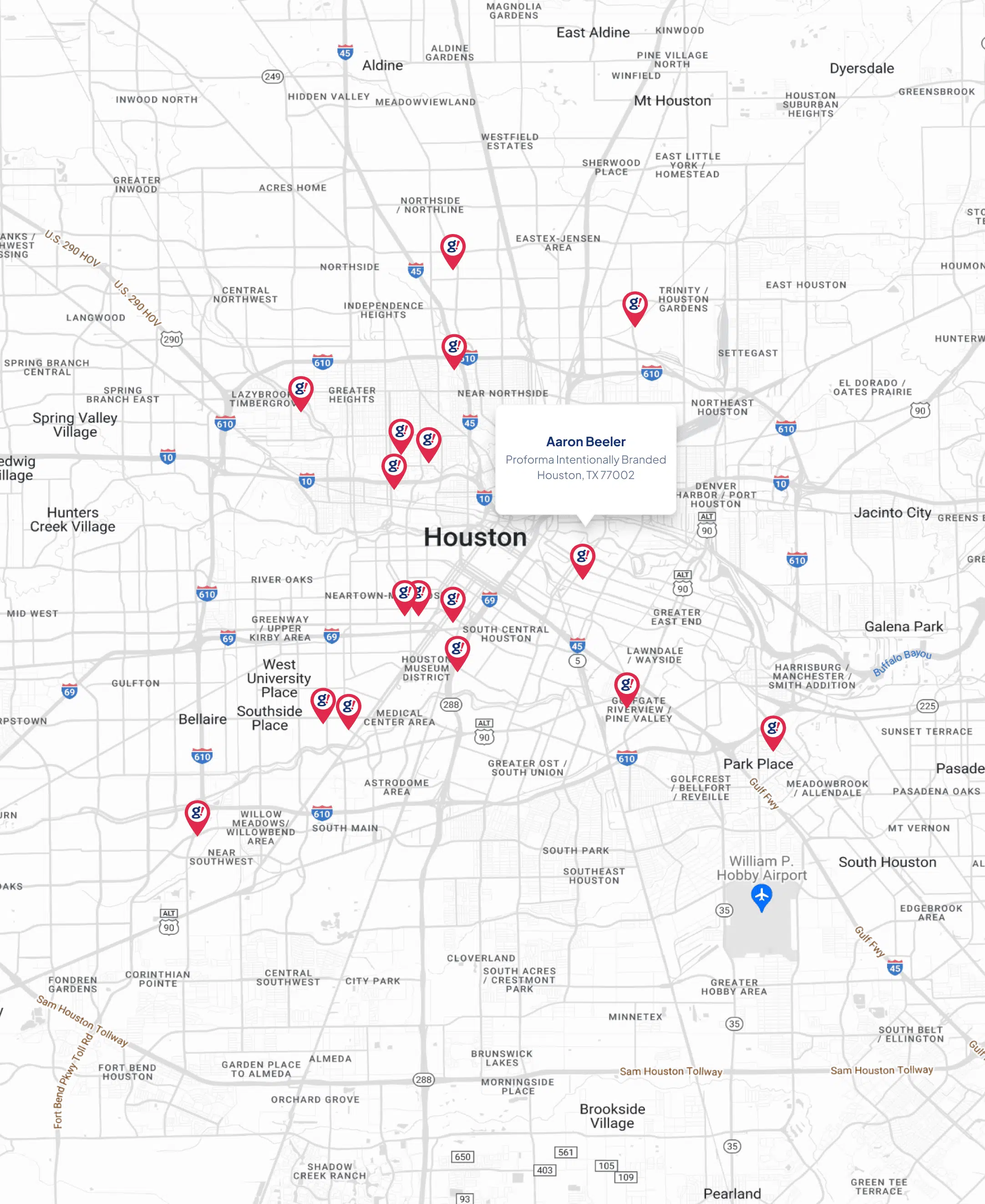Introduction
I was listening to a business book recently that focused on organizational structure and OKRs. At one point, it mentioned company culture—and then, almost in passing, it touched on people’s career paths. That one line stopped me.
I’ve been an entrepreneur since I was 18, and throughout my life, I’ve been surrounded by all kinds of people. Many of them had corporate jobs and very intentional career trajectories. They knew exactly what they wanted and had a detailed roadmap to get there. Some planned every step—from which internships to pursue, to the specific companies they wanted to start with, to the skills they aimed to develop before moving on to the next phase. Every job was a building block toward their ultimate goal.
I was always a bit mesmerized by that. Impressed, even. I dropped out of college and got around on a 10-speed bike or the city bus. I was just trying to keep the rent paid and food in my stomach. These people were doers. They had plans—and they followed them. They had career paths. Real careers.
Fast forward 30+ years, and now I’m surrounded by highly accomplished people. Some have built small empires worth over $25 million. Others are scientists, consultants to foreign governments, or executives at companies like SAP, Oracle, and Dell. Most have 401(k)s and enough retirement savings to live out their later years in comfort.
My own path was anything but clear or conventional. I started business after business—first chasing survival, then searching for something meaningful and lasting. I’ve often looked at my friends and wondered if I’d be further along had I chosen a more defined career path.
So when I heard that line in the book, it hit me. Now, after more than three decades of working for a living, I found myself asking: What is my career? What has it added up to? Am I happy with it? And then another thought followed—What about the people who work for me now?
I don’t run a large corporation with multiple levels of hierarchy, but I can confidently say I’ve acquired a collection of skills that place me at a high level, comparable to leadership roles in much larger companies. For instance, I’m the CEO of gotcha!. But does that mean I could apply to be CEO of SAP? Well, that depends. On one hand, it comes down to skills and experience. Managing a $25 million company is a world apart from managing a $352 billion one. The scale, structure, and responsibilities are vastly different. And the truth is, the opportunity to run a company like SAP is only available to a small fraction of CEOs globally. If I truly wanted that, I’d need to chart a clear, deliberate path toward it—whether that path involves growing gotcha! to that level or moving toward it another way.
So what does a career path look like inside a business like mine? And how can I help my team see their own journey in a meaningful, intentional way?
That’s what this article is about: rethinking what a career path really is—and realizing that for many of us, it doesn’t begin with a ladder.
It begins with who we are becoming.
Rethinking Career Advice
Most people think of their career path as something external—a predefined road laid out in front of them, with clear milestones like promotions, job titles, or salary bands. They imagine themselves stepping from role to role, as if the next opportunity will magically present itself once they’ve “earned” it or waited long enough. This model is passive, and worse, it’s outdated.
The truth is, your career path is not something you find—it’s something you build, and more importantly, it’s something you are. You don’t walk a path. You become it.
This shift in thinking changes everything. When you internalize that your growth—your skills, mindset, and contribution—is the driver of opportunity, you stop waiting for doors to open. You learn how to build them yourself.
Whether you’re in a Fortune 500 company, a 10-person startup, or freelancing on your own, the same principle applies: your trajectory is shaped not by the structure around you, but by the substance within you.
In this article, we’ll break down how this plays out across different types of companies—big corporations, small businesses, and fast-growing startups—and why the real ladder you’re climbing is made of your own decisions, skills, and evolution. Because ultimately, your career path is you.
The Corporate Ladder vs. The Self-Ladder
In large companies, the idea of a clear, structured career path is still alive and well. Job levels, departments, and promotional tracks give the illusion of order and progress. If you play by the rules, follow the process, and stick around long enough, you’ll probably move up. That’s the corporate ladder. But what most people don’t realize is that the ladder is only half real—and climbing it can either be empowering or disillusioning, depending on how you approach it.
Yes, there are promotions. Yes, titles can change. But none of it means much unless you’re growing into someone more capable, more valuable, and more self-aware. Climbing the ladder externally without evolving internally leads to frustration, stagnation, and eventually burnout. You might get the role, but not the respect. The paycheck, but not the purpose.
That’s why the real climb is internal. Call it the self-ladder—a progression of capability, clarity, and contribution. It’s the shift from waiting to be noticed to making yourself undeniable. From hoping someone invests in you to actively investing in yourself.
In big companies, this internal growth gives you options. You can pursue vertical promotions, yes—but you can also grow laterally. You can learn how departments work together, how business decisions are made, and how to lead without authority. When you grow beyond the boundaries of your role, you gain leverage. Suddenly, you’re not just a team member—you’re a force.
And here’s the secret: those who rise the fastest inside large organizations are almost always those who stopped playing checkers and started playing chess. They understood their growth wasn’t just about pleasing a boss or earning points. It was about building themselves into someone who could operate at the next level—regardless of their current title.
So whether you’re aiming for that corner office or considering a pivot, never forget: the real ladder you should care about is the one you’re building within.
The Lateral Growth Advantage in Small Companies
If big companies offer the illusion of structured growth, small companies offer something entirely different: freedom. But with that freedom comes responsibility—because no one is going to chart your path for you. The structure is looser, the roles blur together, and titles often don’t mean much. But that’s exactly where the opportunity lies.
In a small company, the best thing you can do is grow laterally. That means looking beyond your job description and stepping into spaces that need attention. If you were hired to do marketing but see the sales process is broken—get involved. If operations is struggling, lend a hand. Every time you expand laterally, you build real-world experience, add tools to your belt, and increase your value.
Think of it like this: in a small company, there may be no ladder to climb—but there are walls to push out. And the more you expand your range, the more central you become to the company’s survival and success.
This lateral expansion becomes your leverage. If a ceiling appears—whether it’s capped growth, limited resources, or ownership bottlenecks—you don’t leave empty-handed. You’ve built a diverse, high-value skillset that you can take with you. The next company won’t just see you as a candidate—they’ll see you as a Swiss Army knife.
And there’s another upside: in small companies, leadership sees everything. Initiative doesn’t get lost in layers of management. When you step up, people notice. You have the chance to become not just useful, but essential. That’s how you go from “employee” to “indispensable.”
So instead of obsessing over whether there’s a ladder to climb, ask a better question: Where can I expand?
Growing with a Startup – From Contributor to Architect
Startups are a different kind of ecosystem. There are no ladders yet. No walls to push out. Just open space—chaotic, fast-moving, and full of potential. At first glance, this can be overwhelming. Roles change overnight. Priorities shift weekly. But for the right kind of person, it’s the ultimate career playground.
In a startup, you’re not joining a structure. You’re helping to create it. And that changes the entire dynamic. Your job isn’t just to perform—it’s to build. If you approach it passively, waiting for clarity or direction, you’ll struggle. But if you engage with ownership, curiosity, and the willingness to wear multiple hats, you won’t just grow with the company—you’ll help shape what it becomes.
And here’s the key insight: in a fast-growing company, if you grow with it—expanding your skills, delivering results, taking initiative—then the company often grows under you, not above you. You don’t get pushed aside by new management. You become the person who defines the next level. You go from contributor to cornerstone. From doer to architect.
That only happens if you make lateral expansion a way of life. You may start in customer support, but learn product, dabble in operations, and drive marketing experiments. You’re not waiting for a title change. You’re creating gravity—becoming someone around whom new roles and departments naturally form.
In startup culture, the most respected people aren’t just the smartest or most experienced—they’re the ones who made things happen. Who figured things out. Who solved problems no one asked them to solve. Those people become the future VPs, founders, or board members. Because they didn’t just take a job—they took ownership.
So if you’re at a startup—or thinking about joining one—don’t just ask, “What’s the opportunity?” Ask, “What can I help create?” The difference will define your path.
The Internal and External Value Equation
At this point, you might be wondering—what’s the endgame of all this internal and lateral growth? Is it just about being a better employee, a more capable team member, a utility player? Not quite. It’s much bigger than that.
There are two kinds of value you build over time: internal value and market value.
Internal value is about who you’re becoming—your mindset, discipline, confidence, adaptability, and leadership. It’s the stuff that no one can give you and no one can take away. It’s forged through experience, challenge, and self-reflection. Internal value is your foundation. It makes you resilient in uncertainty and resourceful under pressure.
But market value—that’s how the world rewards you for your internal evolution. It’s how companies measure what you’re worth. The broader your skillset, the deeper your impact, the more problems you can solve—the higher your market value climbs. And market value moves with you. If your current company can’t meet it, another one will.
This is why lateral growth is so powerful: it accelerates both sides of the equation.
When you grow across disciplines, when you step outside your comfort zone, when you learn to speak the language of sales, product, leadership, and strategy—you’re building uncommon value. You stop being “just” a marketer, designer, or developer. You become someone who sees the whole field, who connects dots others miss, and who carries insight into every room.
In a world where most people specialize narrowly and think transactionally, being someone who understands systems, relationships, and outcomes at a macro level is incredibly rare—and incredibly valuable.
And here’s the final unlock: once you understand that your internal development creates your market value, you stop chasing titles and start chasing transformation. You stop trying to impress others and start trying to outgrow yesterday’s version of yourself. That’s the career path that keeps compounding—for years.
Conclusion – Own the Climb
Most people wait for someone else to define their path—an employer, a manager, a recruiter, a mentor. But when you really understand that you are your career path, everything changes. You stop waiting for direction. You stop chasing predefined ladders. You start building.
You realize that whether you’re in a massive corporation, a five-person team, or a garage startup, the same principle applies: your trajectory is not based on what’s available—it’s based on what you become capable of handling. Promotions, raises, roles—they follow growth. Not the other way around.
So wherever you are right now, own it. Look around and ask yourself:
- What can I learn here?
- What can I take responsibility for, even if it’s not in my job description?
- Where can I grow laterally, not just vertically?
- What kind of person would I have to become for this company—or the next one—to be lucky to have me?
Because when you start thinking like that, you create your own momentum. You build gravity around your effort, your vision, and your evolution. You stop climbing someone else’s ladder and start ascending your own.
There is no path. There’s only you—and the choices you make.
So make them count.
Because your career path isn’t out there somewhere.
Your career path is you.


















